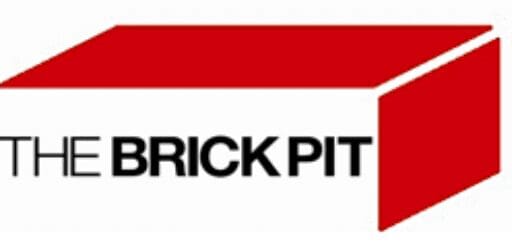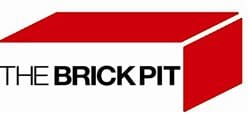Mortar is everywhere in construction, yet it often goes unnoticed. It’s the essential binding agent in brickwork, masonry, and even historical restorations. Without mortar, towering buildings, sturdy walls, and beautiful sandstone structures simply wouldn’t stand the test of time. But what is mortar made of, and why is it so crucial?
Let’s explore the fascinating world of mortar, its ingredients, types, and applications. Whether you’re a DIY enthusiast or a professional contractor, this deep dive will equip you with everything you need to know.
What Is Mortar Made Of?
At its core, mortar is a mixture of sand, cement, and water, but the details can vary depending on its use. Additional materials like lime, gypsum, and polymers can transform basic mortar into specialized blends for specific purposes.
Here’s a closer look at the ingredients:
| Ingredient | Role in Mortar |
|---|---|
| Sand | Provides structure and prevents excessive shrinkage during drying. |
| Cement | Acts as the binding agent, ensuring the mix holds masonry units together. |
| Water | Activates the cement, creating a paste-like consistency for easy application. |
| Lime | Improves flexibility and water resistance, reducing cracking. |
| Gypsum | Controls the setting time, ideal for plaster applications or decorative finishes. |
| Polymers | Enhance adhesion, water resistance, and durability in modern construction. |
These ingredients are carefully combined to create a mortar mix that meets the needs of both traditional and modern construction projects.
Types of Mortar and Their Applications
Mortar is not a one-size-fits-all material. Its composition changes depending on the specific project, whether it’s a brick wall, cinderblock structure, or a historic sandstone restoration.
Ordinary Portland Cement Mortar (OPC Mortar)
- Composition: Sand, water, and ordinary Portland cement.
- Use: Perfect for general masonry, such as brickwork, concrete slabs, and walls.
- Properties: Strong but prone to cracking due to its rigidity.
Lime Mortar
- Composition: Lime, sand, and water.
- Use: Ideal for restoring historical masonry and flexible structures like sandstone walls.
- Properties: Breathable, reducing moisture buildup and cracking.
Hydraulic Mortar
- Composition: Hydraulic lime or cement, sand, and water.
- Use: Suitable for damp environments or underwater applications.
- Properties: Sets and hardens even in wet conditions.
Polymer-Modified Mortar
- Composition: Traditional ingredients with added polymers.
- Use: High-strength applications like tiling, concrete blocks, and modern masonry.
- Properties: Adhesive, water-resistant, and durable.
Mud Mortar
- Composition: Clay, water, and sometimes sticky rice or lime.
- Use: Traditional constructions using sun-dried bricks or rural masonry.
- Properties: Eco-friendly and inexpensive but less durable than modern alternatives.
Gypsum Mortar
- Composition: Gypsum, sand, and water.
- Use: Decorative finishes and plaster of Paris applications.
- Properties: Sets quickly, making it perfect for artistic or intricate masonry.
The Many Functions of Mortar in Masonry
Mortar serves as more than just a binding agent—it’s a versatile material with multiple roles in construction:
- Binding Building Materials
- Mortar holds together bricks, cinderblocks, and stone tiles to form durable structures.
- Sealing Joints
- Prevents water and air from penetrating the masonry, preserving the integrity of the structure.
- Flexibility and Cushioning
- Absorbs slight movements in buildings, reducing the risk of cracking. This is especially important for historic buildings.
- Aesthetic Appeal
- Provides smooth and uniform joints that enhance the visual appeal of brick walls and other masonry.
- Repair and Replacement
- Pre-mixed or specialty mortars make it easy to repair failing or damaged joints.
Common Mortar Challenges and How to Solve Them
Why does mortar crack?
- Cause: Using incompatible mortar types or improper mixing ratios.
- Solution: Match the mortar type to the material and environment. Add lime for flexibility in historical or sandstone structures.
Can I reuse old mortar?
- Cause: Old mortar loses its strength and binding properties over time.
- Solution: Always use fresh mortar for repairs and post-construction fixes.
How do I repair damaged mortar joints?
- Remove the old mortar carefully to avoid damaging bricks.
- Clean the joints to remove debris.
- Use fresh mortar, preferably of the same type as the original.
- Smooth the joints for a professional finish.
Mixing Mortar: A Practical Guide
Getting the right mortar mix is critical to the success of any project. Here’s how to do it:
- Gather Fresh Materials
- Use clean sand, fresh cement, and the appropriate additives for your project.
- Follow Correct Ratios
- A typical ratio is 1 part cement to 4 parts sand. Adjust based on the desired strength and flexibility.
- Mix Thoroughly
- Use a cement mixer or mix by hand until the ingredients are evenly combined.
- Test Consistency
- The mortar should hold its shape without being too dry or runny. Add water gradually for precision.
Mortar in Historical and Modern Construction
In historical masonry, lime-based mortars are favored for their compatibility with ancient bricks and sandstone walls. They allow the structures to breathe, reducing moisture buildup and preserving their longevity.
Modern construction, on the other hand, relies on polymer-modified mortars for high-strength applications like reinforced concrete slabs and foundation walls. These mortars are engineered to meet the demands of today’s construction projects.
FAQs About Mortar
What is mortar made of?
Mortar is primarily a mixture of sand, cement, and water, with optional additives like lime, gypsum, or polymers for specific properties.
Can I use mortar for concrete slabs?
Mortar isn’t suitable for load-bearing applications like slabs. Use reinforced concrete for these purposes.
What type of mortar is best for historical buildings?
Lime mortar is ideal for historical buildings, as it’s flexible, breathable, and compatible with older materials like sandstone and clay bricks.
Partner with The Brick Pit for All Your Masonry Needs
At The Brick Pit, we specialize in recycled bricks that pair perfectly with the right mortar for any project. With over 40 years of expertise, we’re here to help you make sustainable and stunning choices.
Explore these articles to learn more:
- Living Building Challenge
- Recycling, Reuse, and Upcycling Facts
- Using Old Bricks for Edging
- Australia’s Best Houses
- How to Lay a Brick Path
To Wrap It Up
Mortar is the backbone of masonry, holding together everything from modern brick walls to ancient sandstone structures. By understanding its composition, types, and applications, you can choose the right mortar for your project and ensure lasting results. Whether you’re building something new or preserving something old, mortar truly holds the key to durability and beauty.


